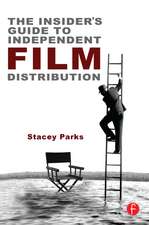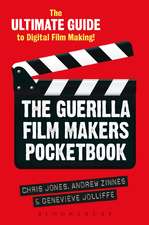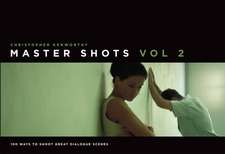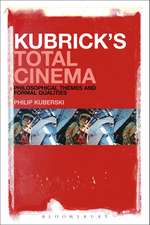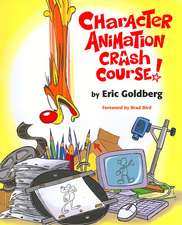Merchants of Menace: The Business of Horror Cinema
Editat de Dr. Richard Nowellen Limba Engleză Hardback – 4 iun 2014
| Toate formatele și edițiile | Preț | Express |
|---|---|---|
| Paperback (1) | 238.67 lei 6-8 săpt. | |
| Bloomsbury Publishing – 4 iun 2014 | 238.67 lei 6-8 săpt. | |
| Hardback (1) | 832.26 lei 6-8 săpt. | |
| Bloomsbury Publishing – 4 iun 2014 | 832.26 lei 6-8 săpt. |
Preț: 832.26 lei
Preț vechi: 1065.84 lei
-22% Nou
Puncte Express: 1248
Preț estimativ în valută:
159.30€ • 173.10$ • 133.90£
159.30€ • 173.10$ • 133.90£
Carte tipărită la comandă
Livrare economică 21 aprilie-05 mai
Preluare comenzi: 021 569.72.76
Specificații
ISBN-13: 9781623568795
ISBN-10: 162356879X
Pagini: 280
Ilustrații: 20 bw illus
Dimensiuni: 152 x 229 x 25 mm
Greutate: 0.52 kg
Ediția:New.
Editura: Bloomsbury Publishing
Colecția Bloomsbury Academic
Locul publicării:New York, United States
ISBN-10: 162356879X
Pagini: 280
Ilustrații: 20 bw illus
Dimensiuni: 152 x 229 x 25 mm
Greutate: 0.52 kg
Ediția:New.
Editura: Bloomsbury Publishing
Colecția Bloomsbury Academic
Locul publicării:New York, United States
Caracteristici
Provides the first far-reaching account of the economic dimensions of horror cinema
Notă biografică
Richard Nowell teaches American Cinema at the American Studies Department of Charles University in Prague, Czech Republic. He is the author of Blood Money: A History of the First Teen Slasher Film Cycle (2011), he has served as a guest editor of the journal Iluminace, and he has published articles in several journals including the New Review of Film & Television Studies, Post Script, the Journal of Film and Video, InMedia, and Cinema Journal.
Cuprins
List of Illustrations AcknowledgementsContributors Introduction There's Gold in them there ChillsRichard Nowell Section One Production Lines, Trends, and CyclesChapter One 'House of Horrors': Corporate Strategy at Universal Pictures in the 1930s/Kyle Edwards Chapter Two The Undead of Hollywood and Poverty Row: The Influence of Studio-Era Industrial Patterns on Zombie Film Production, 1932-46/Todd K. Platts Chapter ThreeBy the Book: American Horror Cinema and Horror Literature of the late 1960s and 1970s/ Peter Hutchings Chapter Four Risen From the Vaults: Recent Horror Film Remakes and the American Film Industry/Kevin Heffernan Chapter Five Monster Factory: International Dynamics of the Australian Horror Movie Industry /Mark David Ryan Section TwoFilm Content, Style, and ThemesChapter Six 'Bad Medicine': The Psychiatric Profession's Interventions into the Business of Postwar Horror/Tim Snelson Chapter Seven Horror Film Atmosphere as Anti-Narrative (and Vice Versa)/Robert Spadoni Chapter Eight 'A Kind of Bacall Quality': Jamie Lee Curtis, Stardom, and Gentrifying Non-Hollywood Horror/Richard Nowell Chapter Nine 'New Decade, New Rules': Rebooting the Scream Franchise in the Digital Age/Valerie Wee Section ThreeMovie Marketing, Branding, and DistributionChapter Ten 'Hot Profits Out of Cold Shivers!': Horror, the First Run Market, and the Hollywood Studios, 1938-42/Mark Jancovich Chapter Eleven Strange Enjoyments: The Marketing and Reception of Horror in the Civil Rights Era Black Press/Mikal J. Gaines Chapter Twelve Bids for Distinction: The Critical-Industrial Function of the Horror Auteur/Joe Tompkins Chapter ThirteenLow Budgets, No Budgets, and Digital-Video Nasties: Recent British Horror and Informal Distribution/Johnny Walker Chapter Fourteen Hammer 2.0: Legacy, Modernization, and Hammer Horror as a Heritage Brand / Matt Hills Index
Recenzii
Unearthing the industrial logics of the horror genre, Merchants of Menace provides lively case studies that expose the tactics of their production as well as unusual quirks in the process. These studies will reanimate and refashion our histories of the genre and the standard maxims about horror-film fabrication, cultural tastes, the films' heroines and heroes, and the audiences for these movies. An outstanding collection!
A major advance in our understanding of the industrial underpinnings of horror cinema and of commercial filmmaking generally.
As the first collection to explore the economics of horror movies from Dracula to Scre4m, Merchants of Menace offers a new and illuminating perspective on the history of the genre. Challenging the conventional accounts of horror movies as symptoms of cultural unease, the spectator's unconscious or renegade politics, its contributors examine the commercial strategies that have shaped their production and marketing of fear for entertainment, and the audiences who have consumed horror for recreation.
Taking us through a century of Anglo-American horror production, Merchants of Menace illustrates how production strategies, target markets, product differentiation and brand identities have all impacted on the themes and preoccupations of this most vital and persistent of popular film genres. Packed with insightful historical research and analysis from some of the most influential scholars in contemporary horror film studies, this book highlights the importance of attending to the industrial and commercial factors that have shaped trends within the horror film from the height of the Hollywood studio system to the digital age. Shedding new light on the studios, production companies, star names, auteur directors, and canonical-and previously under-explored-films that characterise horror film history, Merchants of Menace asks us to look at the history of horror cinema-and the vicissitudes of horror production and distribution-from new and vital perspectives. Essential reading for horror film scholars and fans alike.
A major advance in our understanding of the industrial underpinnings of horror cinema and of commercial filmmaking generally.
As the first collection to explore the economics of horror movies from Dracula to Scre4m, Merchants of Menace offers a new and illuminating perspective on the history of the genre. Challenging the conventional accounts of horror movies as symptoms of cultural unease, the spectator's unconscious or renegade politics, its contributors examine the commercial strategies that have shaped their production and marketing of fear for entertainment, and the audiences who have consumed horror for recreation.
Taking us through a century of Anglo-American horror production, Merchants of Menace illustrates how production strategies, target markets, product differentiation and brand identities have all impacted on the themes and preoccupations of this most vital and persistent of popular film genres. Packed with insightful historical research and analysis from some of the most influential scholars in contemporary horror film studies, this book highlights the importance of attending to the industrial and commercial factors that have shaped trends within the horror film from the height of the Hollywood studio system to the digital age. Shedding new light on the studios, production companies, star names, auteur directors, and canonical-and previously under-explored-films that characterise horror film history, Merchants of Menace asks us to look at the history of horror cinema-and the vicissitudes of horror production and distribution-from new and vital perspectives. Essential reading for horror film scholars and fans alike.

